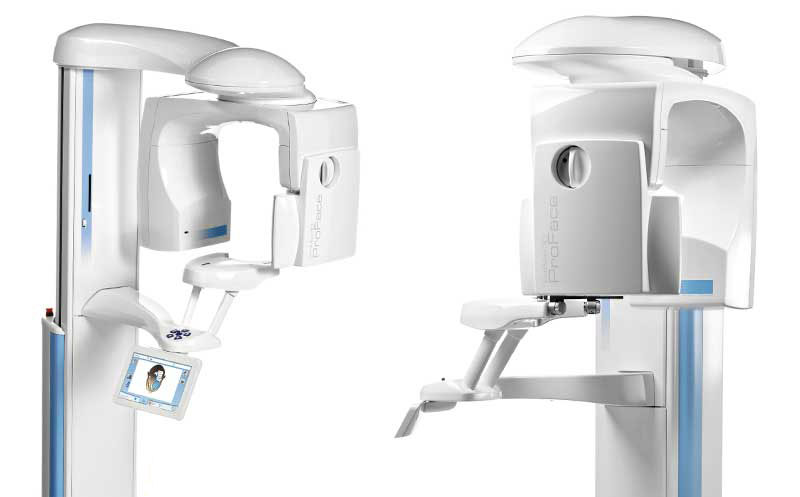Experience the GentleWave® Procedure, an innovative alternative to standard root canal treatment. It presents a major advancement that helps us achieve our goal to effectively clean a tooth’s entire root canal system, no matter how complex. The root canal system consists of intricate channels for the nerves and blood vessels. We are always evaluating technological advancements and incorporating them into our practice when we believe that doing so will help us provide a higher level of care than previously possible and help us save more teeth for more of our patients.
The GentleWave® System delivers a broad range of sound waves within the complex anatomy found within the tooth, in concert with continuous irrigation. In a matter of minutes, this procedure results in complete cleaning and disinfecting of the network of canals. The incredible effectiveness of this system also allows us to conserve more tooth structure than ever before.
We are very proud to offer this level of care to our patients. London Endodontics is fully certified in the use of the GentleWave® System and will gladly answer any questions you may have about this exciting new technology.

Our practice utilizes state-of-the-art small volume cone-beam CT (computed tomography) technology that provides highly accurate, 3-D radiographic images for the diagnosis, and endodontic treatment. This allows three-dimensional visualization of teeth, bone, sinuses and surrounding structures with minimal radiation to the patient, enabling a level of anatomical accuracy and patient care not possible with regular dental x-rays. With the addition of cone-beam CT technology to our office, our practice is committed to providing innovative, high-quality, patient care.
ROOT CANAL THERAPY:
What is a root canal?
With over 15 million root canal procedures performed every year in Canada and U.S.A., root canal aka endodontic therapy is one of the most common dental procedures. This simple treatment can save your natural teeth and prevent the need of dental implants or bridges.
At the center of your tooth is the pulp. Pulp is a collection of connective tissue, blood vessels and nerves that helps to build the surrounding tooth. Infection of the pulp can be caused by trauma, deep decay, fractures, or repeated dental procedures. Symptoms of the infection can be identified as a visible injury, swelling, sensitivity to temperature, or discomfort in the tooth and gums. The procedure itself is meant to relieve pain experienced from dental infection.
How is a root canal performed?
If you experience any of these symptoms, your dentist will most likely recommend root canal treatment to eliminate the diseased pulp. This injured pulp is removed and the root canal system is thoroughly cleaned and sealed. This therapy usually involves local anesthesia and may be completed in one or more visits depending on the treatment required. Success for this type of treatment occurs over 95% of cases. If your tooth is not amenable to endodontic treatment or the chance of success is unfavorable, you will be informed at the time of consultation or when a complication becomes evident during or after treatment.
What happens after treatment?
When your root canal therapy has been completed, a report of your treatment will be sent to your dentist. You should contact their office for a follow-up restoration within a few weeks of completion at our office. Your restorative dentist will decide on what type of restoration is necessary to protect your tooth. Although patients may experience minor discomfort, it is rare for endodontic patients to experience complications after routine endodontic treatment or microsurgery. If a problem does occur, we are here to help you.
How much will it cost?
The cost associated with this procedure can vary depending on factors such as the severity of damage to the affected tooth and which tooth is affected. In general, endodontic treatment is much less expensive than tooth extraction and replacement with an artificial tooth.
ENDODONTIC RETREATMENT:
With the appropriate care, your teeth that have had endodontic treatment will last as long as other natural teeth. Yet, a tooth that has received treatment may fail to heal or pain may continue to exist. Sometimes, the pain may occur months or years after treatment. If so, Endodontic Retreatment may be needed.
Improper healing may be caused by:
- Curved or narrow canals that were not treated during the initial treatment.
- Complicated canals that went undetected during the initial treatment.
- If the crown or restoration was not placed within the appropriate amount of time following the procedure.
- If the crown or restoration did not prevent saliva from contaminating the inside of the tooth.
In some cases, new problems can influence a tooth that was successfully treated:
- New decay can expose a root canal filling material, causing infection.
- A cracked or loose filling or crown can expose the tooth to new infection.
Once retreatment has been selected as a solution to your problem, Dr. Bhalla will reopen your tooth to gain access to the root canal filling material. This restorative material will be removed to enable access to the root canal. Dr. Bhalla will now clean your canals and carefully examine the inside of the problematic tooth. Once cleaned, the canals are disinfected, filled and sealed followed by the placement of a temporary filling in the tooth.
At this point, you will need to return to your dentist as soon as possible in order to have a new crown or restoration placed on the tooth to restore full functionality.
ENDODONTIC MICROSURGERY:
Why would I need Endodontic Surgery (also known as Apicoectomy)?
Surgery can help save your tooth in a variety of situations such as in allowing us to visualize a fracture or hidden canal(s). Usually, a tooth that has undergone a root canal can last the rest of your life and never need further endodontic treatment. However, in a few cases, a tooth may fail to heal. The tooth may become painful or diseased months or even years after successful treatment. If this is true for you, surgery may help save your tooth. The most common surgery used to save infected, root canal treated teeth is called an apicoectomy. In some cases, this is a simpler and direct approach to target the exact cause of the infection.
What is an Apicoectomy?
An incision is made in the gum tissue to expose the bone and surrounding inflamed tissue. The damaged tissue is removed along with the end of the root tip. A root-end filling is placed to prevent reinfection of the root and the gum is sutured. The bone naturally heals around the root over a period of months restoring full function.
What should I expect after an Apicoectomy?
Following the procedure, there may be some discomfort or slight swelling while the incision heals. This is normal for any surgical procedure. To alleviate any discomfort, an appropriate pain medication will be recommended. If you have pain that does not respond to medication, please call our office.
CRACKED TEETH:
There are multiple types of cracks that can be found in teeth. Cracks in teeth usually occur due to parafuntional habits such as bruxism (grinding teeth) or clenching. Cracks or fractures can be classified into different categories:
- Craze lines: these are in the outer enamel of the tooth and only affect the appearance of the tooth. They are more common in adults and do not generally require endodontic treatment.
- Fractured cusps: when a cusp of a tooth becomes weakened, it may fracture off. Usually there is pain associated with a tooth or area before the fracture and subsides after the tooth has fractured off. A fractured cusp may or may not involve the nerve of a tooth. Sometimes due to the extent of the fracture, a root canal may need needed in order to restore the tooth appropriately.
- Root fractures: depending on the extent of a fracture, the tooth may be treatable or may be non-salvageable. Since Dr. Bhalla uses the surgical operating microscope while performing root canals, if a crack can be visualized, Dr. Bhalla has the tools to determine how far it may extend into the root. If a fracture is resulting in a split tooth, unfortunately extraction is the best option. Sometimes, endodontic microsurgery may be needed to determine if a vertical root fracture is present. If a cracked tooth can be saved, it needs to be treated or it can result in a split tooth resulting in the loss of the tooth.
TRAUMATIC INJURIES:
Cracks or fractures can also form from traumatic injuries. When your tooth is injured or fractured, you may need to see a professional trained in dental trauma to manage these traumatic injuries quickly.
Types of Traumatic Fractures:
Dislodged Teeth
Injuries to the mouth can cause teeth to be pushed back into their sockets. Your general dentist or one of our doctors may reposition and stabilize your tooth. Root canal treatment is usually started within a few weeks of the injury and a medication, such as calcium hydroxide, will be placed inside the tooth. Eventually, a permanent root canal filling will be placed.
Sometimes a tooth may be pushed partially out of the socket. Again, your general dentist or one of our doctors may reposition and stabilize your tooth. If the pulp remains healthy, then no other treatment is necessary. Yet, if the pulp becomes damaged or infected, root canal treatment will be required.
Avulsed Teeth
If an injury causes a tooth to be completely knocked out of your mouth, it is important that you are treated immediately! If this happens to you, keep the tooth moist. If possible, put it back into the socket. A tooth can be saved if it remains moist and reimplanted within an hour or being knocked out. You can even put the tooth in milk or your own saliva. Dr. Bhalla may start root canal treatment based upon the stage of root development. The length of time the tooth was out of your mouth and the way the tooth was stored, may influence the type of treatment you receive and the ultimate prognosis of your tooth.
Injuries in children
An injured immature tooth may need one of the following procedures to improve the chances of saving the tooth:
- Apexogenesis: This procedure encourages the root to continue development as the pulp is healed. Soft tissue is covered with medication to encourage growth. The tip of the root (apex) will continue to close as the child gets older. In turn, the walls of the root canal will thicken. If the pulp heals, no additional treatment will be necessary. The more mature the root becomes, the better the chance to save the tooth.
- Apexification: In this case, the unhealthy pulp is removed. Dr. Bhalla will place medication into the root to help a hard tissue form near the root tip. This hardened tissue provides a barrier for the root canal filling. At this point, the root canal walls will not continue to develop, making the tooth susceptible to fractures. So it is important to have the tooth properly restored by your dentist.

